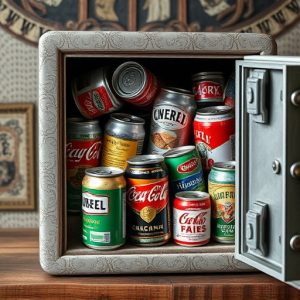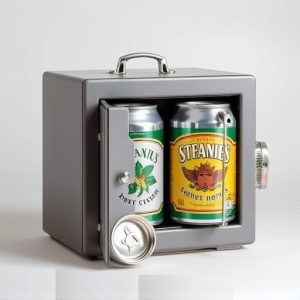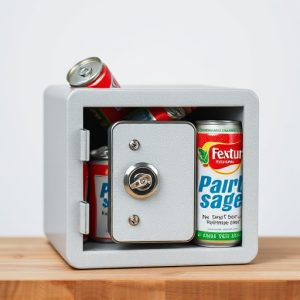Designing Safe Havens: Blending Hidden Safes into Everyday Life
When designing hidden safes that look real, placement is paramount. Opt for everyday objects or spac…….
When designing hidden safes that look real, placement is paramount. Opt for everyday objects or spaces out of sight yet easily accessible, like faux electrical boxes or intricately carved bookcases. Creative spots like under stairs, behind paintings, or within fireplace mantels offer discretion and easy retrieval. Hidden Safes That Look Real should blend seamlessly with décor, thanks to skilled artisans' meticulous craftsmanship. Prioritize secure anchoring, advanced locking mechanisms, and professional installation for high-value items. The ideal hiding spot offers both aesthetic appeal and robust security.
In today’s world, discretion is key when it comes to safeguarding valuable items. Discover the art of designing hidden safes that seamlessly blend into your household decor, offering both aesthetics and unparalleled security. From strategic location choices to custom building techniques, this guide explores how to create real-looking spaces that protect your treasures. Learn about advanced locking mechanisms, innovative technology, and design elements that ensure your valuable possessions remain safe and secure, hidden from prying eyes.
- Choosing the Right Location for Your Hidden Safe
- – Factors to consider when selecting a hiding spot
- – Integrating design elements for seamless blending
Choosing the Right Location for Your Hidden Safe
When designing a hidden safe that looks real, selecting the appropriate location is paramount. Consider everyday objects or spaces that are out of sight but easily accessible. For instance, a faux electrical box, fake vent cover, or even an intricately carved bookcase can serve as perfect hiding spots. These options blend seamlessly into your home’s aesthetic while providing secure storage for valuables.
Think beyond the obvious and examine areas where you might not initially suspect a hidden safe. Under a staircase, behind a painting, or within a fireplace mantel—these are just a few creative places to conceal your treasure. A well-chosen location ensures both discretion and accessibility, making it easier to protect your possessions from prying eyes while keeping them readily available when needed.
– Factors to consider when selecting a hiding spot
When choosing a location for your hidden safe that looks real, consider both accessibility and discreteness. Opt for spots that are not immediately obvious but still easily reachable, such as within plain sight but elevated or behind objects that blend in with your decor. For instance, a wall-mounted mirror frame or a faux electric socket could conceal a safe, providing both camouflage and easy access. Alternatively, hidden safes designed to resemble common household items like books, fire extinguishers, or even artificial rocks offer discreet storage solutions that blend seamlessly into your environment.
Additional factors include the weight and size of the safe, ensuring it can be securely anchored in place without drawing attention. Consider also the level of security needed; for high-value items, look for safes with advanced locking mechanisms and, if necessary, professional installation to ensure maximum protection. Ultimately, a well-selected hiding spot should offer both an aesthetically pleasing facade and robust security features, making it an ideal depository for valuable assets while maintaining the appearance of a regular household item.
– Integrating design elements for seamless blending
When designing hidden safes that look real, seamless integration with your household décor is key. Skilled artisans and manufacturers employ various design elements to ensure these secure storage solutions blend effortlessly into your home’s aesthetics. From mimicking the appearance of bookshelves or electrical outlets to crafting furniture pieces with secret compartments, every detail is meticulously considered. This approach ensures that even upon close inspection, the safe remains imperceptible, maintaining its concealed nature.
The art of disguise goes beyond visual similarity. Functional design elements are incorporated to create a genuine sense of place. For instance, a safe disguised as a vintage radio or a hidden compartment within a floor lamp not only offers discreet storage but also serves as a conversation starter, seamlessly merging functionality with security in the most unexpected ways.
When designing a diversion safe that looks real, it’s all about attention to detail and thoughtful placement. By considering factors like everyday objects, natural features, or architectural elements as potential hiding spots, you can create an effective and unassuming storage solution. Integrate your safe seamlessly into the environment through creative design choices, ensuring it becomes just another functional part of your home—a masterfully concealed sanctuary for your valuables.


